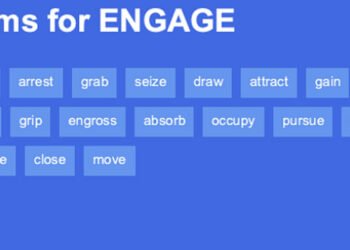In the digital age, marketers are no strangers to managing multiple forms of content that span different file types. From Word documents, Excel sheets, and PowerPoint slides to PDFs and image formats like JPEGs or PNGs — navigating these can be a puzzle if not managed efficiently. This often involves converting one file format into another, a task easier said than done without the right tools or knowledge.
But why is seamless file conversion essential for managing your marketing workflow? Imagine this: you’ve got a killer marketing presentation in PowerPoint that needs to be emailed. You realize that the recipients may not have PowerPoint installed, so you need to convert it into a PDF. Or perhaps you’ve written a brilliant white paper in Word and now want to generate an ebook in ePub format. The efficiency and quality of these conversions can impact the overall productivity and effectiveness of your marketing strategies.
So let’s dive in! This guide aims to furnish you with the ultimate methods and tools for seamless file conversion to ensure your marketing workflow runs like a well-oiled machine.
1. Leveraging MS Office SDKs For Automation
When your marketing workflow primarily revolves around Microsoft Office Suite, it’s imperative to maximize efficiency by converting file types without manual intervention. The ‘MS Office SDK’ (Software Development Kit) provides a golden opportunity to automate such tasks. For example, you can use the MS Office SDK convert DOCX to PDF. This ensures you no longer have to open each Word document individually to ‘Save As’ a PDF.
The SDK provides a set of API calls to automate the conversion process. It may require some programming know-how, but the payoff in terms of time and energy saved is immense. By utilizing the SDK in your automated marketing systems, you ensure not only seamless conversion but also uniform formatting across all your documents, thereby preserving brand consistency.
2. Online Conversion Tools
If coding isn’t your cup of tea, there are a plethora of online tools designed to do the job. Websites like CloudConvert, Zamzar, and Smallpdf offer user-friendly interfaces to convert files from one format to another. They support multiple file types and usually offer both free and premium plans.
However, ensure you review their privacy policies before uploading any sensitive documents. Online converters are convenient, but they may store your files temporarily, which could be a security concern.
3. Command-Line Tools
For those comfortable working with command-line interfaces, tools like Pandoc offer immense flexibility. A Swiss Army knife for file conversion, Pandoc can convert files from one markup format into another while retaining the style and structure. You can write a script to batch convert multiple files, integrate it into your existing workflow, and even add custom formatting options.
4. In-Built Software Features
Many software suites offer some degree of file conversion capabilities built-in. For instance, Google Drive allows you to convert a Google Doc to a PDF or a Microsoft Word document and vice versa. Adobe Acrobat can convert PDFs into editable Word or Excel files. While they may not offer as many features as specialized converters, they can be sufficient for simple tasks.
5. Mobile Apps For On-The-Go Conversions
In today’s fast-paced marketing environment, you may find yourself needing to convert a file while away from your workstation. Mobile apps like PDF Converter, File Converter, and others can come to the rescue. However, mobile apps may not retain 100% of the original formatting, so it’s best used for emergency conversions.
6. Investing In Comprehensive Conversion Software
If your marketing team often juggles various file formats, it might be worthwhile to invest in comprehensive file conversion software. These come with advanced features like batch conversion, preset formatting options, and more. Some even integrate directly into your marketing software suite, offering a unified solution for all your conversion needs.
7. Utilizing APIs For Custom Solutions
Sometimes your specific marketing workflow may require unique file conversion functionalities that off-the-shelf tools just can’t provide. In such instances, using APIs (Application Programming Interfaces) from reliable third-party services can be a game-changer. These APIs can be embedded directly into your existing digital platforms, providing seamless file conversion options tailored to your specific needs.
For example, if you operate a content management system where multiple team members upload files in various formats, integrating a file conversion API can automatically convert these into a standardized format. This ensures consistency and reduces the manual work involved in making sure everything aligns with your workflow requirements.
Implementing an API might require some initial development work, but it offers the highest degree of customization and can be a long-term, scalable solution for your marketing team.
Conclusion
Seamless file conversion is an integral part of a smooth, efficient marketing workflow. Whether you are a coder relying on MS Office SDK or a marketer using simple online tools, there is a plethora of options for you to navigate the landscape of file formats. With advanced software, mobile apps, and even custom API solutions at your disposal, you’re well-equipped to handle any conversion need that comes your way.
Remember, the ultimate goal isn’t just to convert files but to facilitate a workflow that allows you to convert prospects into clients efficiently. Adopting a well-suited file conversion strategy can free up valuable time and resources, allowing you to focus on what truly matters: crafting strategies that drive results. Choose your tools wisely and adapt them into your workflow to pave the way for marketing success.












